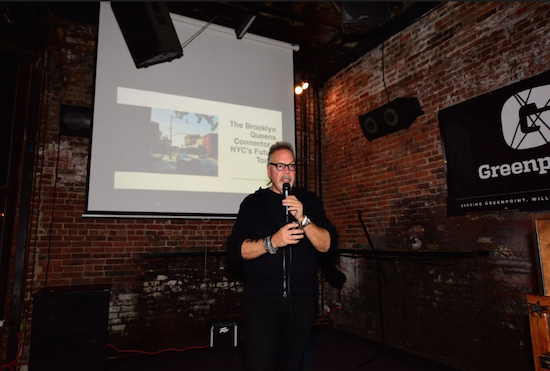Brooklyn-Queens Connector advocacy makes stop in Williamsburg
Friends of the BQX Executive Director Makes Presentation to Greenpoint Chamber of Commerce

Like the Little Engine That Could, proposals for the Brooklyn-Queens Connector streetcar (BQX) continue to gather steam, building momentum in news and feature articles, op-ed pieces, artists’ renditions and residential surveys. It has become one of Mayor Bill de Blasio’s signature projects and has garnered support from many other elected officials, relevant business improvement organizations, community groups and cultural institutions.
The nonprofit 501 (C3) organization Friends of the Brooklyn-Queens Connector, founded in 2014, recently hired its first full-time Executive Director, Ya-Ting Liu. She recently paid a visit to Williamsburg to present the BQX to members of the Greenpoint Chamber of Commerce.
Prior to Liu’s presentation, Greenpoint Chamber of Commerce Chair Elaine Brodsky introduced the Brooklyn Chamber of Commerce’s incoming President Andrew Hoan. Hoan wasted no time sharing his enthusiasm for the BQX project: “This is a piece of infrastructure that will serve residents, businesses, not-for-profits — move New Yorkers in ways not possible before,” Hoan declared. “We will support this project — it’s incredible for Brooklyn, incredible for New York. It’s a whole new way of doing business!”
